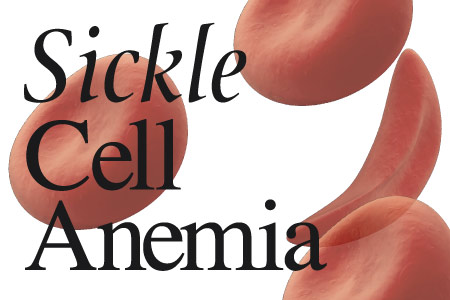 |
| Random Google image |
Sickle
cell anaemia (commonly reffered to as SS) is
an inherited complex blood disorder where red blood cells develop abnormally.
The Red blood cells carry oxygen from the lungs to the rest of the body. The
round shape and flexibility of the cells allows them to move easily around the
body. But in people with sickle cell anaemia, the shape and texture of the
blood cells become hard and sticky and are shaped like bananas or sickles
(hence the name “sickle cell”) thereby causing the cells to die prematurely and
leading to a shortage of red blood cells (low haemoglobin). This causes
symptoms of anaemia, such as tiredness and shortness of breath.
Symptoms
Includes pains (often called the sickle cell crisis) which affect different parts of the body, jaundice, priapism (persistent and painful erection) if the blood become trapped in the penis, serious complications amongst many others. Sickle cell anaemia can cause a series of painful crisis if not treated. The symptoms of pain can range from moderate to severe, and episodes can last from several hours to several weeks. Some children may only experience one or two episodes of pain a year while others can experience as many as 12 to 14 episodes. These painful crises is triggered when the odd shaped cell stick in and block red blood vessels that supply the body’s tissues thereby preventing oxygen from getting through. It also carries a risk of a stroke and infections. The three most common infections among children are pneumonia (an infection of the lungs), osteomyelitis (an infection that develops inside a bone), and meningitis (an infection of the lining of the brain). It can also cause a series of joint problems such as hips and shoulder pains. Pregnant women might often experience an increase in painful crisis although this might not always be the case.
Diagnosis
Sickle cell can be diagnosed at birth or in an unborn child when the mother is still pregnant but the symptoms does not usually appear until a baby is about six months or older. It is most common among the black community, mostly found in people whose family originated from areas where there is a form of malaria. One in 20 from these risks group is affected. A child may be affected with a full-blown sickle cell disorder if both parents are carriers. Therefore it is usually advisable to take a simple blood test to determine if one is a carrier or not before starting a family. This way the sickle cell trait can be prevented.
Reducing the risks of painful crisis
Drinking plenty of non-fizzy fluids especially water can help prevent dehydration as well as reduce the risk of painful crisis. It is also advisable for someone with sickle cell to be aware of certain things that might trigger the pain such as changes in temperature, infections, stress and so on. Eating a balanced diet, avoiding extreme weather or temperatures and keeping adequately warm will help reduce the risks of sickle cell crisis. Babies should be fully immunised against all childhood infections. It is also very important that people with sickle cell go for regular checkups with specialist clinics because they may discover some issues through investigations that the parents may not know.
Life expectancy
The average
life expectancy of a person with the condition is estimated to be 53-60 years
of age although there is still a risk of people dying at younger age especially
in areas of the world where there is no access to specialist hospitals. It is
hoped that, in the future, the life expectancy of people with sickle cell
anaemia will continue to increase as the effectiveness of treatments improves.
Advice
Know and understand some rear but serious complications
that might happen. This will help prevent problems and know how to deal with
such problems. Know when and where to seek medical advice. Don’t feel isolated.
Talk to other people or parents with similar problem. Be aware of voluntary
organisations such as the sickle cell society.
Hoping
to start a family with another person with sickle cell traits?
You need to be aware of and
understand the genetic risk for each and every child you might have. All or
none of your children could be affected. Research shows that there is a 25%
chance in each and every pregnancy. This means that one in every four babies
born to parents who are carriers, have a chance of getting sickle cell. You
need to know what options are available to you. find out more about the condition
before embarking on any pregnancy and ensure that your baby is tested at birth .
©Views247

No comments:
Post a Comment
What's your view?